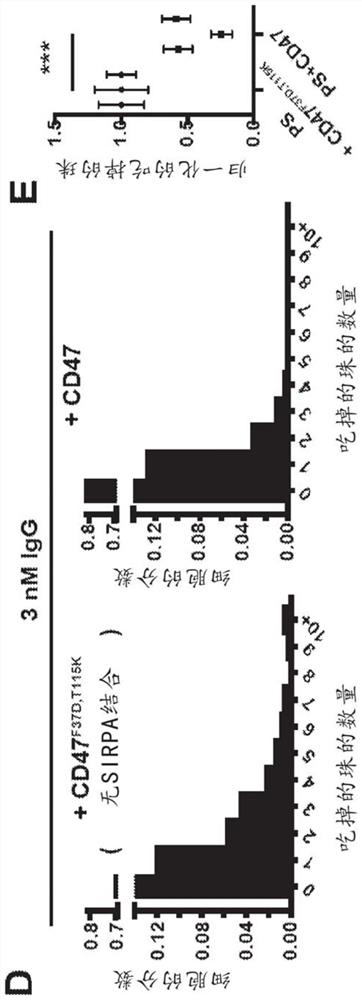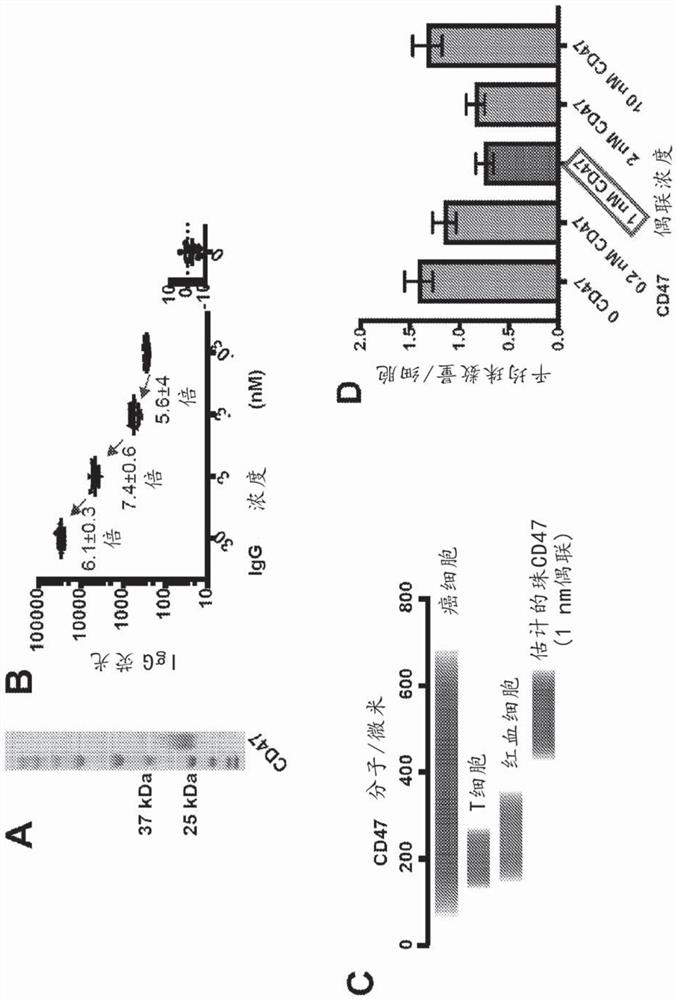Combination cancer therapy involving chemical activation of integrin and targeted cellular immunotherapy
A technology of integrin and therapy, applied in the treatment of cancer including solid tumors and hematological malignancies, increasing the phagocytosis of cancer cells
- Summary
- Abstract
- Description
- Claims
- Application Information
AI Technical Summary
Problems solved by technology
Method used
Image
Examples
Embodiment 1
[0099] Additional Experimental Procedures
[0100] cell culture
[0101] RAW264.7 macrophages were provided by ATCC and certified Mycoplasma-free. Cells were incubated with 1x Penicillin-Streptomycin-Glutamine (Corning, Cat. No. 30-009Cl), 1 mM Sodium Pyruvate (Gibco, Cat. No. 11360-070) and 10% heat-inactivated fetal calf serum (Atlanta Biologicals , Cat. No. S11150H) in DMEM (Gibco, Cat. No. 11965-092). To keep variation to a minimum, cells were discarded after 20 passages. L1210 cells were also obtained from ATCC.
[0102] J774A.1 macrophages were provided by the UCSF Cell Culture Facility. J774A.1 and 293T cells were tested for Mycoplasma using the Lonza MycoAlert Detection Kit (Lonza, Cat. No. LT07-318) and a control group (Lonza, Cat. No. LT07-518).
[0103] Bone marrow-derived macrophages (BMDM) from C57BL / 6J mice in the hip and long bones.
[0104] Constructs and Antibodies
[0105] exist Figure 9 All relevant information on the constructs and antibodies ...
Embodiment 2
[0149] CD47 inhibits IgG and phosphatidylserine "eat me" signaling
[0150] This example describes the results of experiments performed to demonstrate that CD47-SIRPA signaling inhibits IgG and phosphatidylserine "eat me" signaling. To study the mechanisms underlying the integration of "eat me" and "don't eat me" signals during phagocytosis, develop and use methods such as figure 1 Reconstituted phagocytosis targets shown in A. Silica beads were coated in a supported lipid bilayer to mimic the surface of cancer cells. To activate phagocytosis, IgG was introduced synergistically with CD47 blockade (a well-defined "eat me" signal) to promote cancer cell clearance. IgG is recognized by the Fcγ family of receptors (FcRs), which activate downstream signaling and phagocytosis (Freeman and Grinstein, 2014). To activate SIRPA, the CD47 extracellular domain was treated at a surface density chosen to mimic the CD47 density on cancer cells (approximately 600 molecules / μm 2 , figu...
Embodiment 3
[0154] CD47 linkage relocates SIRPA to phagocytic synapses
[0155] This example describes the results of experiments performed to demonstrate that CD47 linkage relocalizes SIRPA to phagocytic synapses. These experiments were performed to determine the mechanism by which CD47 linkage regulates SIRPA activity. SIRPA localization during phagocytosis of IgG-coated beads was first examined. When not bound to CD47, SIRPA dissociates from phagocytic cups encapsulated on IgG-coated beads ( image 3 A). Similarly, SIRPA was depleted at the center of the immune synapse between macrophages and a supporting lipid bilayer containing phosphatidylserine ( Figure 4 A- Figure 4 F). In contrast, SIRPA is retained in the phagocytic cup in the presence of CD47 ( image 3 A). These data demonstrate that unlinked SIRPA is excluded from phagocytic synapses, whereas CD47-bound SIRPA is retained in phagocytic synapses.
[0156] Additional experiments were performed to address the mechanis...
PUM
 Login to View More
Login to View More Abstract
Description
Claims
Application Information
 Login to View More
Login to View More - R&D Engineer
- R&D Manager
- IP Professional
- Industry Leading Data Capabilities
- Powerful AI technology
- Patent DNA Extraction
Browse by: Latest US Patents, China's latest patents, Technical Efficacy Thesaurus, Application Domain, Technology Topic, Popular Technical Reports.
© 2024 PatSnap. All rights reserved.Legal|Privacy policy|Modern Slavery Act Transparency Statement|Sitemap|About US| Contact US: help@patsnap.com










